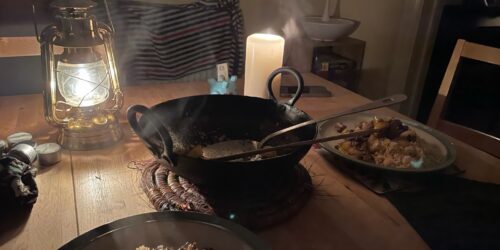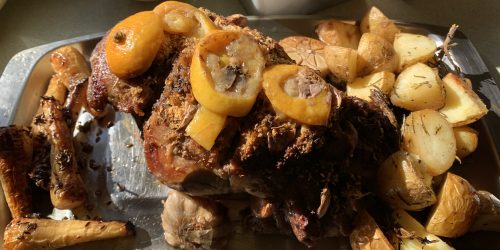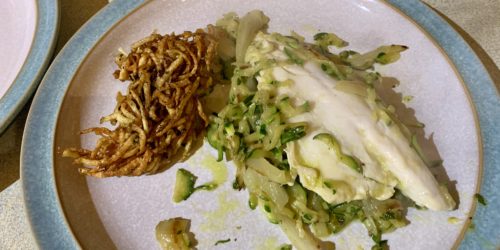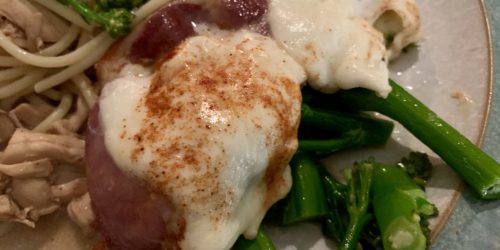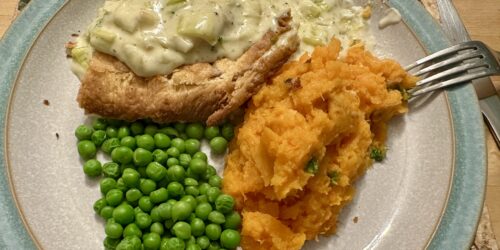All we like sheep
Jenny had all sorts of interesting culinary experiences growing up in the USA. But lamb, oddly, was never on the menu.
Maybe this is because out West you’ve got prairies as far as you can see, you’ve got swine and cattle and fowl and goodness only knows what, simply because you’ve got room for it.
Sheep, on the other hand, are ideal for any old patch of grass at an unfarmable incline; they can turn the scrubbiest, most barren hillside into juicy, tender meat (and wool, and cheese). This is why they’re popular in New Zealand, which is more or less equal parts mountainside, vineyard and dormant volcano. All three, in places.
And lamb and mutton are on the menu in far more inhospitable places too. North Africa, the Middle East, India.
Wales.
Sheep (and goats) can live just about anywhere. That should include the USA, but in terms of sheer bulk of carcase you can’t beat cow, I guess, so Little Bo Peep’s charges never really got a hoofhold there.
On the other hand, I’ve grown up eating lamb and mutton, from a Sunday roast to crisped cutlets and French beans, mutton and tomato stew to kofta kebabs, from shepherd’s pie to shawarma.
One of the things about lamb is that it tends to be quite greasy. So you need to find a way to counteract that when you cook it. Each of the dishes I mention handles the challenge in its own way.
In Middle Eastern cuisine you can let the fat drip off the elephant leg, and cut the meat with spice. When my grandmother made her neck fillet stew, pools of orange fat would rise to the top of the tomato sauce, to be mixed in and enjoyed for the sheer, sinful deliciousness of such a treat. Marinading a lamb leg in slices of kiwi fruit not only tenderizes the meat but adds much-needed acidity. Lamb chops have to be served with fresh mint sauce—it’s the law—for much the same reason.
And I’ve been known to coat a butterflied shoulder with redcurrants from the garden and barbecue the whole thing.
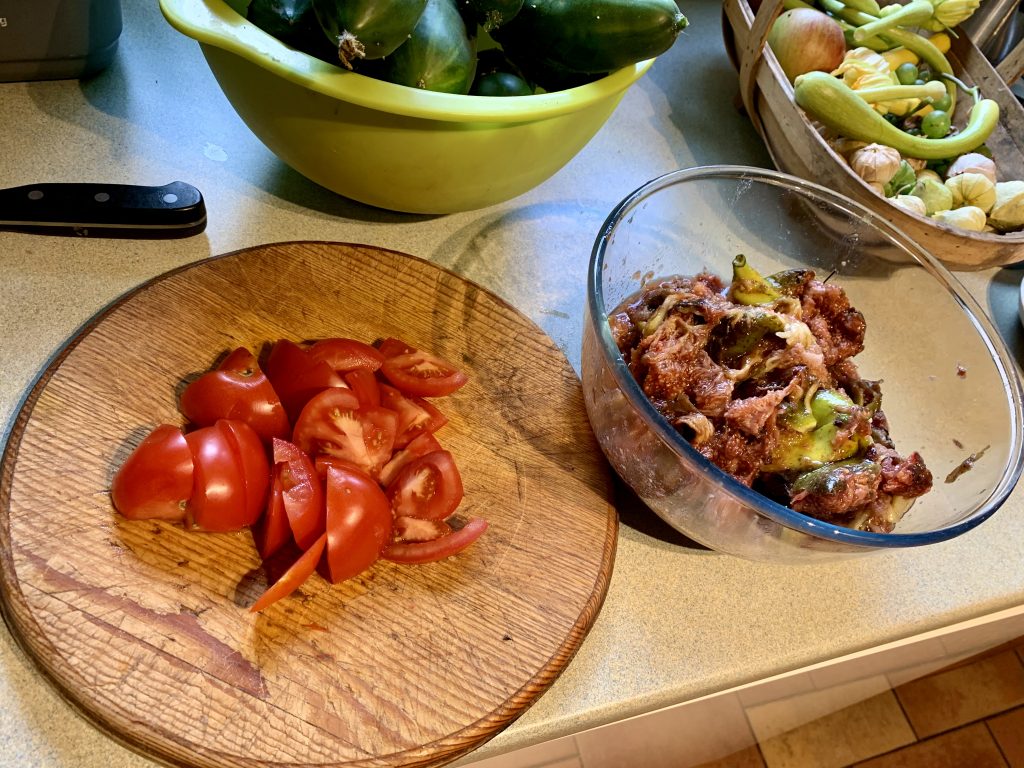
In Kent, at the back end of a crazy, frightening, somehow wonderful summer, we are inundated with figs. We completely missed the harvest from one tree because they suddenly decided to ripen the two weeks we were in Italy. But we hit the main crop a couple of weeks ago, and they’re still going strong, and, let’s face it, you can only dry and freeze so many before you have to face the inevitable: what can we do with all these figs, right now?
For some of them at least, it turns out that the answer is ‘roast lamb’.
Roast lamb leg with fig and tomato marinade
First, I salted the lamb leg and left it in the fridge overnight. This—salting—is pretty much standard these days for me, as I’ve mentioned previously.
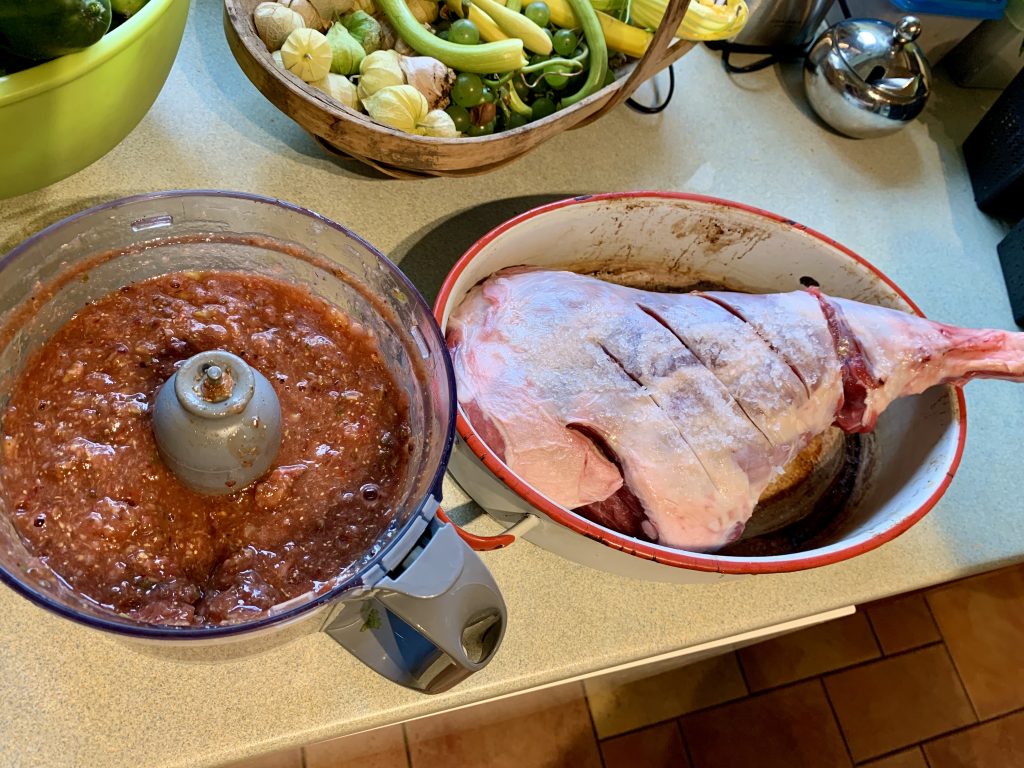
Then I took a good load of figs, 2–3 lbs I suppose, and tore them into shreds by hand. I added three chopped tomatoes and blended the lot together. I seasoned with ras el hanout (which you can find in any Tesco) and, after conferring with Jenny about the acidity, sprinkled with a few splashes of good balsamic vinegar.
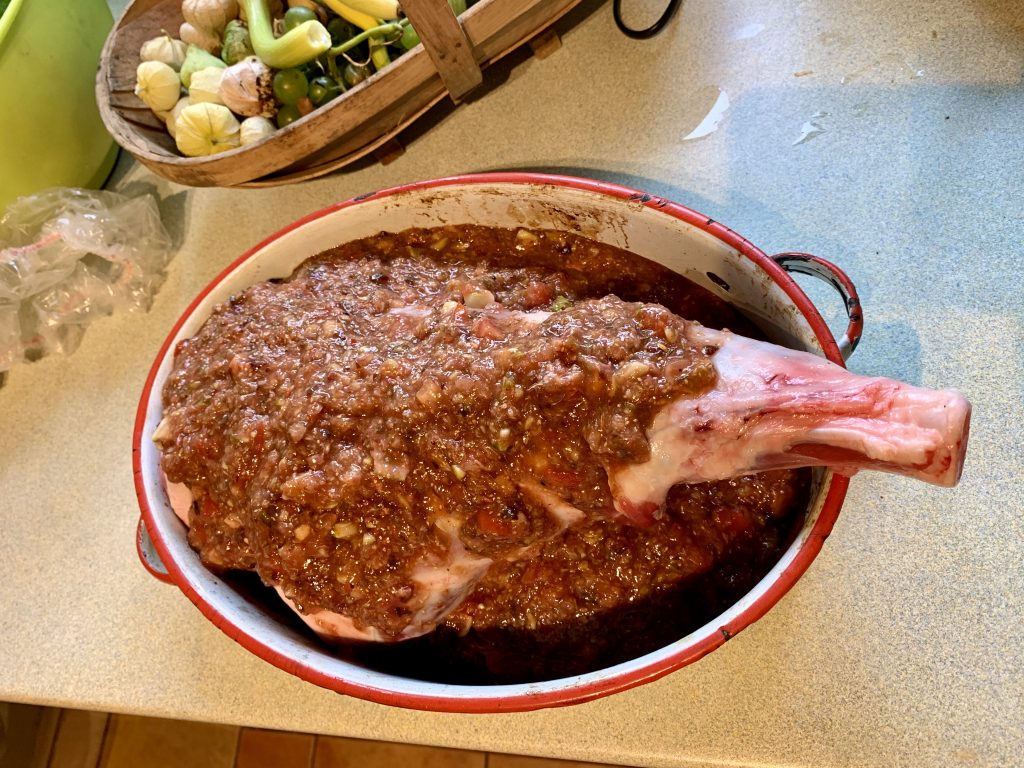
This then went onto the meat and into the fridge for a few hours.
To cook, I let the barbecue get good and hot—about 250ºC—scooped the leg out of the marinade and put the meat directly onto the grill. Lid on, cooked for 2 hours.

Meanwhile I transferred the remaining marinade to a pain and cooked it down ever so slightly. Jenny put together some home-grown vegetables, and we roast those for an hour in the kettle.

We served with some of the warmed marinade poured over the meat and a bottle of Chianti.
If I tried to explain what it taste like I would have to resort to metaphor. The tenderness of the lamb, the slightly acid sweet spiciness of the marinade, the smoky crunch and freshness of the vegetables… I can only describe it as an English Easter Sunday in Morocco.
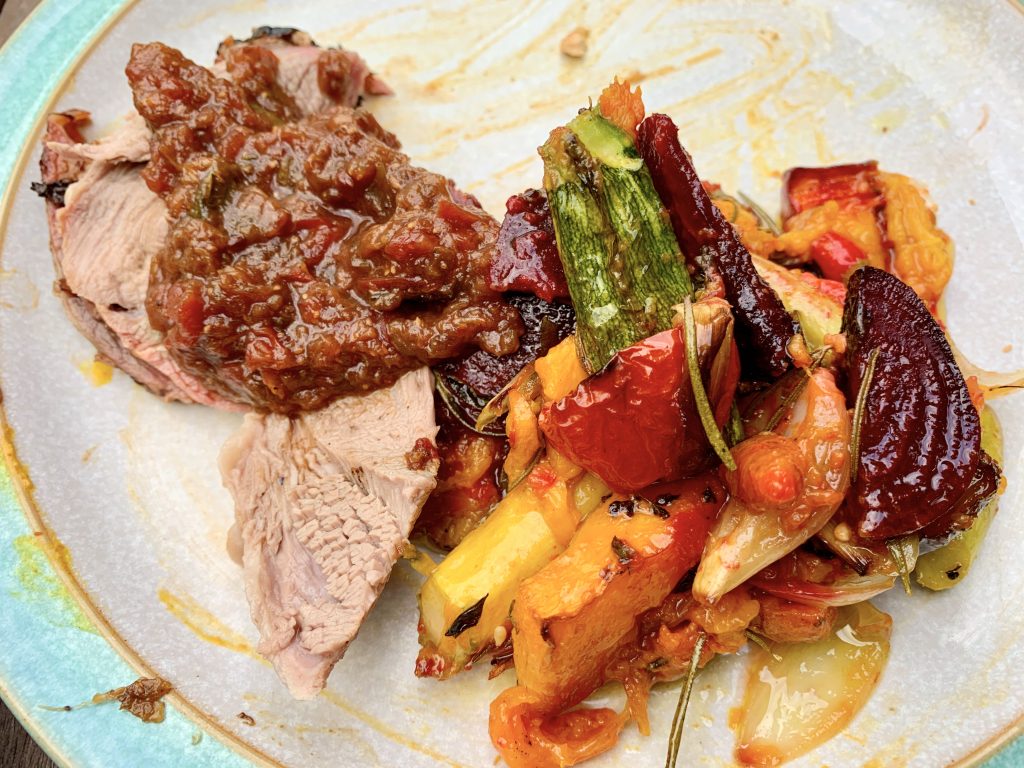
Our good friend Rob was more economical with his words, simply saying it was ‘miraculous’.
Miracle lamb with couscous
What with COVID and whatnot we couldn’t do a proper Bank Holiday barbecue, although we did have Rob. This meant that there was quite a lot of meat left over. No problem of course—leftovers are my specialty.
I was in Morocco once, and while there, as well as discovering what ‘sweetbread’ meant, was introduced to the wonder of couscous. Traditionally the heap of couscous is surrounded by chunks of roast lamb, various vegetables and dates, in a huge bowl in the middle of the table (or floor, as it actually was).
You eat it by taking some meat or veg, scooping up some couscous and rolling it around in your fingers until you have a little ball of deliciousness you can pop into your mouth. Using your right hand only, of course.
My variation on this theme involved roasting some cherry tomatoes with a coarsely chopped onion, frying rough-chopped lamb for a few minutes, and then combining these with chopped fig (of course) and cucumber (of which we also have a glut).
I seasoned the couscous with ras el hanout and chicken salt, squeezed a lemon slice over it and sprinkled with smoked paprika. The meat and veg were arranged around the couscous, and eaten in the traditional way, with forks.
All we like sheep: roast lamb, and a lot of figs, at magirism.org Share on X